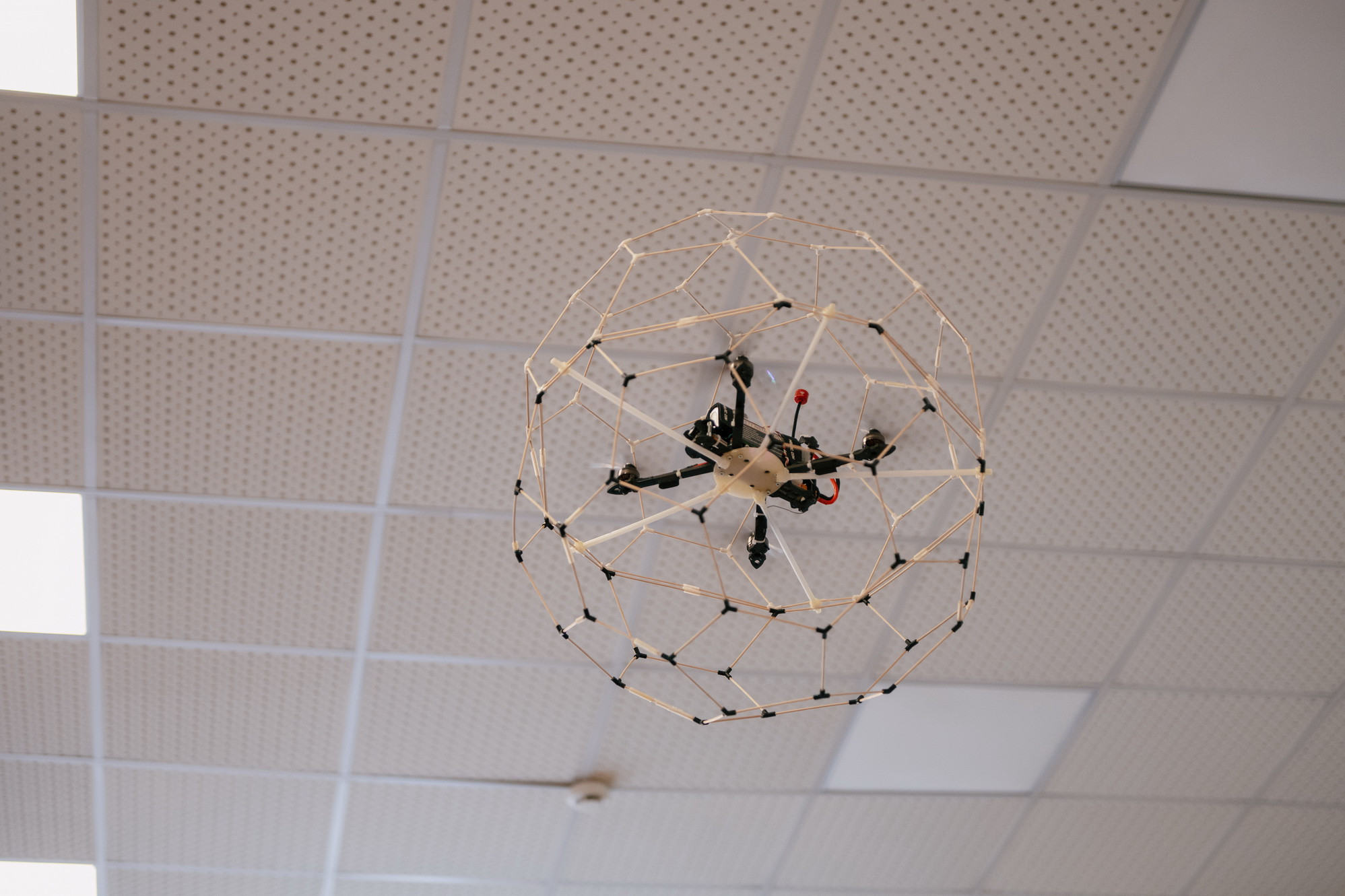Novosibirsk state technical university (NETI) has developed a super-light protection for UAVs, which will save the aircraft after falling from a height.
A prototype of a protective structure for drones has been developed at the youth scientific laboratory of Unmanned Aircraft Systems of the Faculty of Aircraft at NSTU-NETI. The development is a sphere of carbon tubes and plastic jumpers holding them together, inside which a seven-inch quadcopter can be placed.
The small weight and rather large size of the sphere — about 50 by 50 centimeters — allows the drone to move without problems along with protection, but the most important thing is not to get hurt after falling. The design reliably protects the aircraft even when falling from a height of about ten meters.
According to Dmitry Sergeev, head of the youth scientific laboratory of Unmanned Aircraft Systems, a team of first- and second-year graduate students from the Faculty of Aircraft worked on the development of the field.
"The guys took up the technical task after the design and educational event Ostrov-2024, initially they sought lightness and strength. Currently, the prototype weighs about 200 grams and consists of carbon tubes and 3D-printed plastic jumpers, but in the future it is planned to make a variant of thermoplastic jumpers. It is important that these parts do not burst when falling," said Dmitry Sergeev.
The head of the youth laboratory of unmanned aircraft systems noted that the design will be in demand not only when working with drones in confined spaces, where the UAV is likely to hit walls or ceilings, but also in open areas — the carbon sphere will protect the drone of a novice operator from numerous falls and impacts on trees. "The cost of an aircraft with equipment can reach several million rubles, so protection will not be superfluous," Dmitry Sergeev emphasized.
Another advantage of the sphere is that it allows the drone to take off on its own after falling, with enough impact on the engines. But the most important thing is a small cost, which does not exceed seven thousand rubles.
The youth scientific laboratory of unmanned aircraft systems of the Faculty of Aircraft was established within the framework of the Priority 2030 program. Its work is aimed at the development, design and manufacture of prototypes of new type of unmanned aircraft systems, electric motors and communication modules, as well as the training of UAS control operators.
